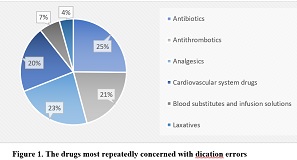LITERATURE REVIEW: SENSITIVITY AND SPECIFICITY OF VDRL AND RPR AS SCREENING TESTS OF SYPHILIS IN PREGNANT WOMEN

Downloads
Early detection of syphilis, especially during pregnancy, is important to prevent comorbidities for the mother and the baby. This study aims to determine whether VDRL is more sensitive and specific than RPR as a diagnostic screening test for syphilis infection in pregnant women. Literature searches for relevant articles were conducted in PubMed, Cochrane, and Proquest using the keywords "VDRL AND RPR AND pregnancy AND syphilis". From the search results, we found 7 articles in Pubmed, 2.290 articles in Proquest, and no relevant articles were found in Cochrane. Title and abstracts were screened for their conformity with the case and clinical questions that had been made. Selected articles were then critically appraised. The results of the study in selected articles indicated that VDRL and RPR showed a false positives rate of 10.5% and 9.6%, respectively. The sensitivity and specificity of VDRL were 71.6% and 89.5%, and those of RPR were 73.5% and 90.5%. VDRL and RPR have a moderate agreement with the TPHA (kappa = 0.6). From these studies it can be concluded that VDRL is not more sensitive and specific than RPR, implying that RPR is a better diagnostic screening test for syphilis infection in pregnant women than VDRL.
Wu X, Hong F, Lan L, et al (2016). Poor awareness of syphilis prevention and treatment knowledge among six different populations in south China, BMC Public Health, 16(1), 1–7
Peeling RW. Mabey D, Kamb ML, et al (2017). Syphilis, Nat Rev Dis Primers, 3, doi: 10.1038/nrdp.2017.73
Landry ML, Peaper D (2017). Laboratory Updates: Clinical Virology and Microbiology. Yale New Haven Health, 26(2), 1-2
Solaimalai D, Rathore S, Beck MM, et al (2020). Enzyme-linked immunosorbent assay (ELISA) versus Venereal Disease Research Laboratory test (VDRL) and rapid plasma reagin test (RPR) for screening of syphilis in pregnant women. Int J Gynaecol Obstet, 150(1), 103–107
Curry SJ, Krist AH, Owens DK, et al (2018). Screening for Syphilis Infection in Pregnant Women: US Preventive Services Task Force Reaffirmation Recommendation Statement. JAMA, 320(9), 911–917
World Health Organization (2017). WHO 2017 Syphilis in Pregnancy Guidelines. Available at: https://www. who.int/reprouctivehealth/publications /rtis/syphilis-ANC-screenandtreat-guidelines/en/
Naidu NK, Bharucha ZS, Sonawane V, et al (2012). Comparative study of Treponemal and non-Treponemal test for screening of blood donated at a blood center. Asian J Transfus Sci, 6(1), 32–35
Lombardo J, Alhashim M (2018). Secondary syphilis: an atypical presentation complicated by a false negative rapid plasma reagin test. Cutis, 101(5), E11–E13
Schmidt BL, Edjlalipour M, Luger A (2000). Comparative evaluation of nine different enzyme-linked immunosorbent assays for determination of antibodies against Treponema pallidum in patients with primary syphilis. J Clin Microbiol, 38(3), 1279–1282
Baker C, Limato R, Tumbelaka P, et al (2020). Antenatal testing for anaemia, HIV and syphilis in Indonesia - A health systems analysis of low coverage. BMC Pregnancy and Childbirth, 20(1), 1–11
Copyright (c) 2021 Tamara Audrey Kadarusman, Sacharissa Zerlina Tsarwah Thirafi, Niki Kusuma Bangsa, Rufina Adelia Widyatama, Lutfi Dewanda Nugroho, Prima Ardiansah Surya, Pudji Lestari

This work is licensed under a Creative Commons Attribution-ShareAlike 4.0 International License.
- The journal allows the author to hold the copyright of the article without restrictions.
- The journal allows the author(s) to retain publishing rights without restrictions.
- The legal formal aspect of journal publication accessibility refers to Creative Commons Attribution Share-Alike (CC BY-SA).
- The Creative Commons Attribution Share-Alike (CC BY-SA) license allows re-distribution and re-use of a licensed work on the conditions that the creator is appropriately credited and that any derivative work is made available under "the same, similar or a compatible license”. Other than the conditions mentioned above, the editorial board is not responsible for copyright violation.































